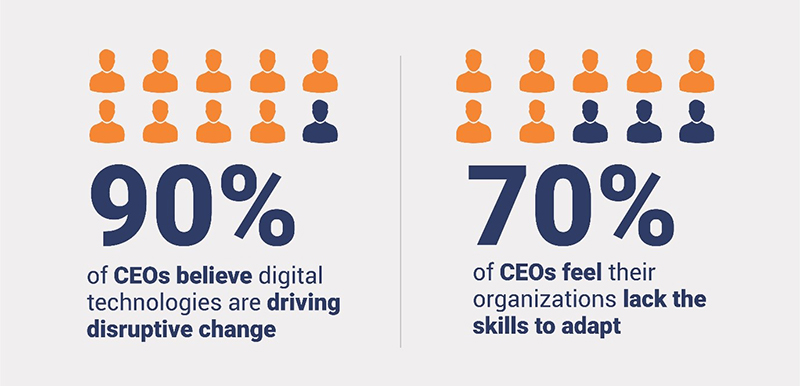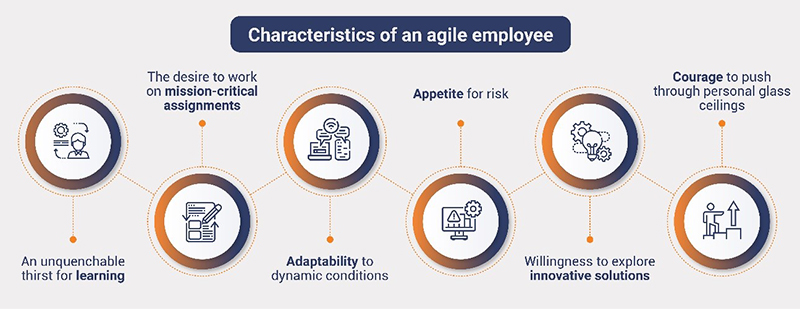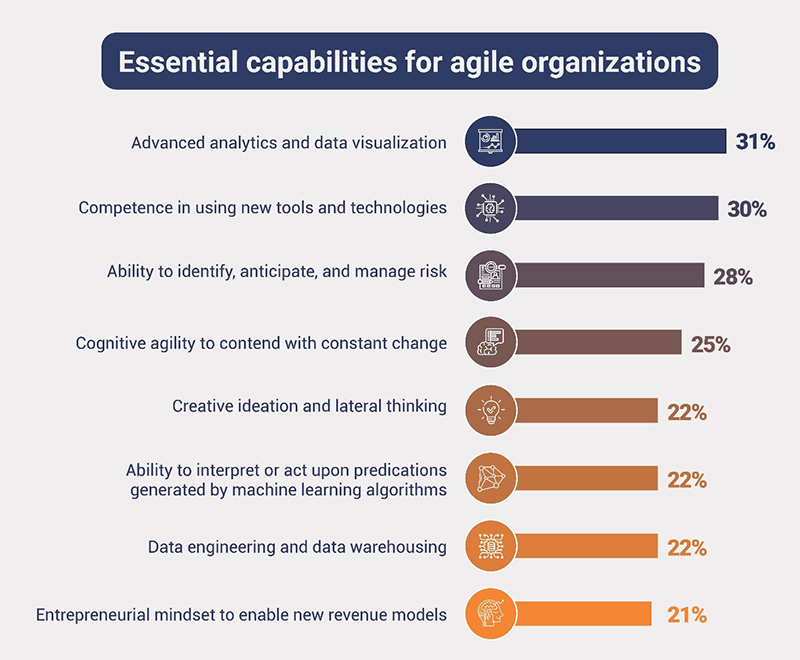
Does agility matter for companies? McKinsey research suggested so – 70 percent of agile companies were also in the top 25 percent of companies ranked on organizational health.
But why the renewed focus on agility? The answer: COVID-19. Given how it has affected all aspects of business, it has meant businesses need to respond quickly and flexibly to changing circumstances i.e. they need to be agile.
The pandemic changed the direction of thinking for the world of business. It firmly disrupted the year-ago narrative on the future of work and how automation, artificial intelligence (AI), and machine learning (ML) would affect it. Organizations of course needed to pivot their approach to business, and two top concerns came up:
Imagine the plight of an HR leader, already figuring out how the strategic priorities of the organization will affect HR plans. Digital transformation is afoot and needs support, cybersecurity requires attention, the many benefits of predictive analytics make a must-have – these and several other requirements mean a struggle to match the available talent with strategic goals.
“Virtually all CEOs (90 percent) believe their company is facing disruptive change driven by digital technologies, and 70 percent say their organization does not have the skills to adapt.”
(Source: Deloitte Human Capital Trends report )

What can an organization do? Either bring in the skills required to fend off and flourish amid competition, or lose to it. Global markets are highly dynamic and change fast, and with data-driven technologies such as machine learning (ML) gaining prominence, business need to be nimble if they are to not just survive but thrive.
Companies often have trouble understanding the current skill sets of their employees, let alone projecting their future skill requirements. Even after skill gaps have been identified, CHROs and chief learning officers find it hard to ensure the learning is developed suitably and its completion or business impact can be tracked and measured.
This is why organizations must rethink their people approach – they need to understand where skill strengths and gaps are, and promote learning and development (L&D) opportunities critical for engaging employees. Consider the following:
“You can't build an adaptable organization without adaptable people.” – Gary Hamel
Agility in employees is the force that drives organizations toward success in the market and a thriving work culture. Here is what you see in an agile employee:

As against this, non-agile employees lose their balance and find it hard to embrace change. This brings about stress for them as well as their colleagues. They are unable to show agility in critical thinking, work styles, decision-making, or problem-solving – all essentials for the organization to stay competitive and future-ready.
An organization faces constant change, from within and outside. Factors such as technological changes, leadership turnover, differing generational preferences, or any other mean the organization must adapt and fluctuate as per the circumstances. The key capabilities such an organization requires are illustrated below:

Agility must become part of the organizational mindset, and simple training will not do the trick. Autonomy- and trust-based modern training methods are of the essence, as they embed learning into day-to-day practice. Up-to-date micro learning, a content library available on demand, and other modern online learning solutions can be incredibly useful here.
By 2024, more than half of organizations plan to reskill at least 50 percent of their workforces.
So how can managers manifest organizational agility at the workplace? By doing an honest assessment, as a start. It is important to know why the required skills are not present. Next is to try a different approach, something unlike the repeated approach followed thus far. Also, bring in equity in work relationships, so that there is common ground for help to be provided.
Keeping skills as the base, here are the key people processes to realign in pursuit of agility:

Clearly, success in the future of work requires agility. Organizations must therefore bring in best practices to access and leverage their flexible talent. The following approach brings great results:
There is no one success mantra for all organizations who want to become agile basis their skill sets. The right skills framework underlying the functioning of the organization exerts great power in shaping the future of the latter. Defining these to the right detail and planning across people processes brings the bests results!

CredBadge™ is a proprietary, secure, digital badging platform that provides for seamless authentication and verification of credentials across digital media worldwide.
CredBadge™ powered credentials ensure that professionals can showcase and verify their qualifications and credentials across all digital platforms, and at any time, across the planet.

Please enter the License Number/Unique Credential Code of the certificant. Results will be displayed if the person holds an active credential from TMI.